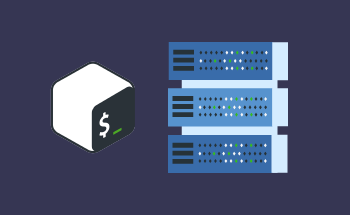Overview of Active Directory Domain Services and Functions
13:19, 04.11.2025
Active Directory Domain Services (AD DS) is a critical component of Microsoft's directory services architecture. It provides a structured approach to managing and securing resources within a networked environment, enabling IT administrators to organize users, devices, and applications efficiently. This article delves into the key aspects of AD DS, including its advantages, terminology, offered services, and the role of domain controllers.
Advantages of Active Directory Domain Services
AD DS offers several significant benefits that simplify network administration and enhance security:
- Centralized Resource Management
AD DS enables administrators to manage resources such as user accounts, groups, and devices from a central location. This simplifies updates, reduces redundancy, and improves consistency across the network. - Enhanced Security Features
By leveraging policies like Group Policy Objects (GPOs), AD DS allows organizations to enforce robust security measures, control user access, and apply software restrictions, ensuring data protection. - Scalability and Flexibility
AD DS supports both small-scale and enterprise-level environments, making it a suitable solution for organizations of any size. It can also integrate with cloud services to expand its capabilities. - Single Sign-On (SSO)
With AD DS, users can access multiple applications and resources using a single set of credentials, enhancing user experience and reducing password fatigue. - Streamlined Authentication
The service provides secure and efficient authentication mechanisms, ensuring that only authorized users can access network resources.
Key Terms Related to Active Directory Domain Services
Understanding the terminology associated with AD DS is crucial for navigating its architecture effectively:
- Domain
A logical group of objects, such as users, computers, and devices, within a network.
- Organizational Unit (OU)
A container within a domain used to organize objects into a hierarchical structure.
- Forest
The top-level entity in AD DS, consisting of one or more domains sharing a common schema.
- Trust Relationships
Allow secure resource sharing between different domains or forests.
- Global Catalog
A distributed data repository containing information about objects within a forest to speed up searches and queries.
Services Offered by Active Directory Domain Services
AD DS provides a range of services to support network functionality and management:
- Authentication Services
AD DS authenticates users and devices attempting to access network resources, ensuring they meet defined security requirements. - Directory Services
It maintains a directory of objects, including their attributes, which can be queried to locate resources. - Group Policy Management
Administrators can define policies to control user environments, enforce security settings, and manage application deployment. - Replication Services
AD DS ensures consistency across the network by replicating directory data between domain controllers. - Domain Name System (DNS) Integration
By integrating with DNS, AD DS allows seamless resolution of domain names to IP addresses, critical for network functionality
Function of Domain Controllers in Active Directory Domain Services
A Domain Controller (DC) is a crucial server that runs AD DS, serving as the backbone of an Active Directory environment. Its primary functions include:
- User Authentication
The DC verifies user credentials during logins, ensuring only authenticated individuals access network resources. - Data Storage
The DC hosts the Active Directory database, which stores detailed information about users, groups, devices, and policies. - Replication Management
DCs synchronize directory data with other DCs to maintain consistency across the network. This process ensures that changes made on one DC are reflected on others. - Policy Enforcement
DCs apply Group Policies to control user and device behavior, such as password policies, software restrictions, and desktop configurations. - Resource Locator
DCs help clients locate resources within the network by responding to service requests, such as finding printers, file shares, or other domain services. - Redundancy and High Availability
Deploying multiple DCs ensures network resilience. If one DC fails, another can step in to maintain uninterrupted services.
Active Directory Domain Services is a foundational technology for modern IT infrastructures. It provides secure, scalable, and efficient management of network resources. AD DS ensures that organizations operate smoothly while safeguarding their digital assets.


